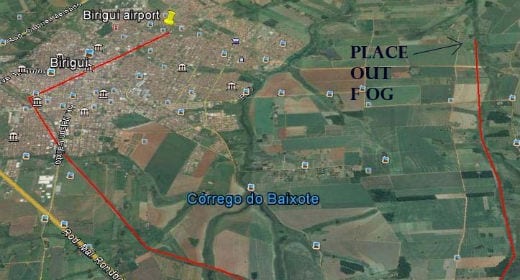Editor’s Note: This is the latest article in our series called “I Can’t Believe I Did That,” where pilots ‘fess up about mistakes they’ve made but lived to tell about. If you have a story to tell, email us at: [email protected]
It was winter time in Brazil, São Paulo State.
I was fresh from my private pilot course. I was young (21) and bold. I bought an Aeronca 7AC Champion with a 65 hp engine and decided to put an 85 hp in my PP-DCJ with a friend who is an A&P mechanic and worked in Birigui City, a small town near where I lived.
The new engine installation was complete and I arrived at the city airport (SJWQ), with a field elevation 1339 feet, at 6:00 am. It was cold and dark with a clear sky in mid-July 1957. The aircraft came out of the hangar, the pre-flight check done with a flashlight, wheels chocked, magnetos on, my friend hand propped and the engine caught fire for the engine break-in schedule. For several minutes I ran the engine according to my friend’s instructions. New engine was ok. Soon it was the sunrise time of 6:59 am. As soon as the sun appeared, I noted a thin fog layer that I wrongly calculated with a base at 500 feet and intended to fly clear below the fog base.
I put altimeter QFE at 0 feet indication, checked engine instruments, full throttle and takeoff from runaway 13. I was still climbing over the runway when suddenly I was in a fog layer at 50 feet. My first reaction was to look at the brightness above and continue to climb with extreme care with commands. Soon my dear plane climbed itself out of the fog layer.
What a glorious sunshine morning! In a cruise velocity I began wide circles over a position I think was the airport at 1500 feet QFE. My entire horizon was full of fog. Doesn’t matter. I was flying my beloved plane, had more than two hours gas and at landing time fog certainly would be over. After 30 minutes of flight, I noted that the oil temp began to rise. Soon it was at an alarming rate. Oh God what do I do? I made a decision to search for a hole in the fog. No way! So I set idle throttle in 180 degree compass course and began a best glide descent at 60 mph.
My plane was trim stable when I entered fog at 300 feet QFE. Inside the fog seconds became minutes and the altimeter slowly began unwinding. 250…, 200…, 150…, 100…, 50…, 0… (I’m still in the fog, and I think God I will crash), -20…, -50 and …WHAT A LUCKY DAY! I am flying below fog at 50 feet over a creek. I follow the water in a southerly direction and recognize the small village of Coroados and follow a district road to Birigui.
The engine is hot but still running. As the ground began to rise, I made a little climb and had poor visibility ahead in mist. In a few minutes I entered Birigui perimeter and flew over streets, avoiding poles and high buildings, and finally landed at the airport with the engine very hot but working. Later I knew that the place I came out of the fog at 1230 feet msl.
Lesson that I never forget: in whatever emergency you have, stay calm, fly the plane until it stops in good or bad ways.
- My encounter with a thunder cloud - June 26, 2015
- Fog makes a flight to remember - September 12, 2014






Certainly a decidedly poor way to execute the first flight with a newly installed engine. This young pilot is perhaps the luckiest flier I’ve ever read about! I’m truly glad that he made it.
I have to believe his confidence, even over-confidence, was the saving grace for this shockingly inexperienced young pilot. He successfully added to his box of experience, while depleting by one flight his box of luck in surviving this truly scary flight.
Yes, you are right. I always have luck in all my flights. Soon I will send to publish how I bought my first plane. If is accepted to publish by Air Facts you will see how luck I was
You are right,
lesson learned should be:”It is stupid to take off under those WX conditions”.
Good grief…!! I don’t know if it was luck or an angel on your shoulder, but something saved your bacon that day. Lesson learned, huh? Thanks for writing.
Dave